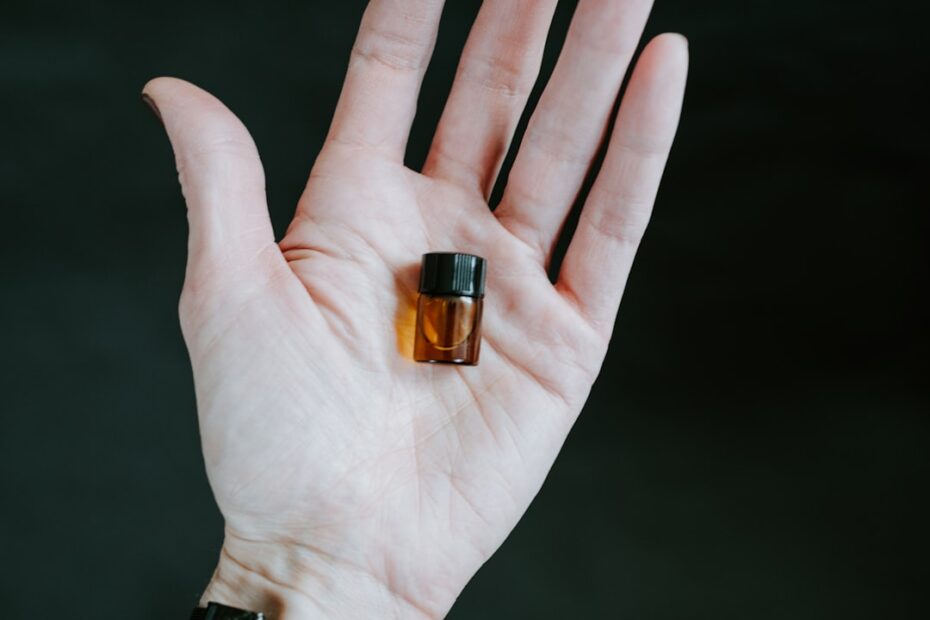Aromatherapy, a practice that harnesses the power of essential oils for therapeutic purposes, has roots that stretch back thousands of years. The earliest recorded use of aromatic plants dates to ancient civilizations such as the Egyptians, who utilized fragrant oils in religious rituals, embalming processes, and personal care. They recognized the significance of scent not only for its pleasing qualities but also for its potential health benefits.
The ancient Greeks and Romans further advanced the practice, integrating essential oils into their baths and massage therapies. Notably, Hippocrates, often referred to as the father of medicine, advocated for the use of aromatic plants to promote health and well-being, laying the groundwork for what would eventually evolve into modern aromatherapy. As time progressed, the knowledge of essential oils and their uses spread across cultures and continents.
In the Middle Ages, the art of distillation was refined, allowing for the extraction of essential oils in a more concentrated form. This period saw the emergence of herbalists and apothecaries who began to document the properties of various plants and their oils. The Renaissance brought about a renewed interest in science and nature, leading to further exploration of the therapeutic potential of essential oils.
Fast forward to the 20th century, when French chemist René-Maurice Gattefossé coined the term “aromatherapy” after discovering the healing properties of lavender oil on a burn he sustained in his laboratory. This pivotal moment marked the transition of aromatherapy from a historical practice to a recognized field of holistic health, paving the way for its resurgence in contemporary wellness practices.
Key Takeaways
- Aromatherapy has been used for centuries, with evidence of its practice dating back to ancient times.
- Essential oils work by stimulating the olfactory system and can promote wellness and relaxation through various methods of application.
- Aromatherapy offers a wide range of benefits, including stress relief, improved sleep, and mood enhancement.
- Diffusion, massage, and inhalation are popular techniques for maximizing the effectiveness of aromatherapy.
- Different essential oils have unique scents and therapeutic properties, making it important to choose the right ones for specific needs and preferences.
Understanding Aromotherapy: How Essential Oils Work to Promote Wellness and Relaxation
The Science Behind Aromatherapy
Aromatherapy is based on the principle that essential oils possess unique chemical compositions that can influence both physical and emotional well-being. These concentrated plant extracts contain volatile compounds that can interact with the body’s olfactory system, triggering responses in the brain that affect mood, stress levels, and overall health.
How Essential Oils Work
When inhaled, essential oils travel through the nasal passages to the limbic system, an area of the brain responsible for emotions and memory. This direct connection explains why certain scents can evoke powerful memories or feelings, making aromatherapy a deeply personal and subjective experience.
The Benefits of Aromatherapy
Moreover, essential oils can also be absorbed through the skin when used in topical applications, such as massages or baths. Once absorbed, these oils enter the bloodstream and can exert various physiological effects, including anti-inflammatory, analgesic, and antimicrobial properties. For instance, oils like eucalyptus and tea tree are known for their ability to combat infections, while lavender is celebrated for its calming effects.
The Benefits of Aromatherapy: From Stress Relief to Improved Sleep and Mood

The benefits of aromatherapy are vast and varied, making it an appealing option for those seeking natural remedies for everyday ailments. One of the most widely recognized advantages is its ability to alleviate stress and anxiety. Scents such as lavender, chamomile, and bergamot have been shown to reduce cortisol levels—the hormone associated with stress—promoting a sense of calm and relaxation.
Many individuals incorporate aromatherapy into their daily routines as a means of managing stressors in their lives, whether through diffusing essential oils at home or using them during meditation practices. In addition to stress relief, aromatherapy has been linked to improved sleep quality and mood enhancement. Essential oils like cedarwood and ylang-ylang are often used to create a tranquil sleep environment, helping individuals fall asleep faster and enjoy deeper rest.
Furthermore, certain scents can uplift mood and increase feelings of happiness; citrus oils such as lemon and orange are particularly effective in this regard. By tapping into the olfactory system’s profound influence on emotions, aromatherapy offers a holistic approach to enhancing mental well-being and fostering a more positive outlook on life.
Aromatherapy Techniques: Diffusion, Massage, and Inhalation for Maximum Effectiveness
| Technique | Effectiveness | Benefits |
|---|---|---|
| Diffusion | High | Even distribution of aroma, can cover larger areas |
| Massage | Medium | Direct application to skin, promotes relaxation and muscle relief |
| Inhalation | High | Quick absorption into bloodstream, can provide immediate relief |
To fully harness the benefits of aromatherapy, various techniques can be employed to ensure maximum effectiveness. One popular method is diffusion, which involves dispersing essential oils into the air using a diffuser. This technique not only fills a space with delightful aromas but also allows for the gradual release of therapeutic properties into the environment.
Different types of diffusers are available—ultrasonic diffusers use water to create a fine mist, while nebulizing diffusers deliver pure essential oil without water. Each type has its advantages, allowing users to choose based on their preferences and needs. Another effective technique is topical application through massage or direct application on pulse points.
When combined with carrier oils such as jojoba or coconut oil, essential oils can be safely applied to the skin for localized relief or relaxation. Massage therapy enhances this experience by promoting circulation and muscle relaxation while allowing the essential oils to penetrate deeper into the tissues. Inhalation is yet another method that can be easily integrated into daily life; simply placing a few drops of essential oil on a tissue or in your hands and inhaling deeply can provide immediate benefits.
By exploring these various techniques, individuals can find what resonates best with them and create personalized aromatherapy experiences.
Choosing the Right Essential Oils: A Guide to Different Scents and Their Therapeutic Properties
Selecting the right essential oils is crucial for maximizing the benefits of aromatherapy. With an extensive array of scents available, each possessing unique therapeutic properties, it can be overwhelming for newcomers to navigate this fragrant world. A good starting point is understanding the general categories of essential oils: calming oils like lavender and chamomile are ideal for relaxation; invigorating oils such as peppermint and eucalyptus can boost energy levels; while grounding oils like sandalwood and frankincense promote emotional balance.
By identifying personal preferences and desired outcomes, individuals can curate a collection that aligns with their wellness goals. It’s also important to consider individual sensitivities or allergies when choosing essential oils. Some people may find certain scents overwhelming or irritating; therefore, conducting a patch test before applying any oil topically is advisable.
Additionally, sourcing high-quality essential oils from reputable suppliers ensures that you are receiving pure products free from synthetic additives or fillers. As you explore different scents and their effects on your mood and well-being, keep a journal to track your experiences—this practice can help refine your choices over time and deepen your understanding of how specific oils resonate with you.
Aromatherapy for Specific Conditions: Using Essential Oils to Address Common Health Issues

Aromatherapy for General Wellness
Aromatherapy has gained recognition not only for its general wellness benefits but also for its potential in addressing specific health conditions.
Relieving Physical Discomfort
Individuals suffering from headaches or migraines may find relief through inhaling peppermint or lavender oil; both have analgesic properties that can ease tension and discomfort. Those dealing with digestive issues might benefit from ginger or fennel essential oils, which are known for their ability to soothe nausea and promote healthy digestion when used in massage or inhalation techniques.
Supporting Mental Health Management
Aromatherapy can play a supportive role in mental health management. Essential oils like bergamot and ylang-ylang have been studied for their antidepressant effects, helping to alleviate symptoms of anxiety and depression when incorporated into daily routines. For those experiencing insomnia or restless nights, chamomile and valerian root oils are often recommended due to their sedative properties.
Creating Personalized Aromatherapy Practices
By understanding how specific essential oils can target particular health concerns, individuals can create tailored aromatherapy practices that complement their overall wellness strategies.
Incorporating Aromatherapy into Your Daily Routine: Tips for Creating a Relaxing and Healing Environment at Home
Integrating aromatherapy into your daily routine can transform your living space into a sanctuary of relaxation and healing. One effective way to start is by designating specific areas in your home for aromatherapy practices—perhaps a cozy corner with a diffuser where you can unwind with a book or meditate after a long day. Establishing rituals around these spaces can enhance their effectiveness; consider lighting candles or playing soft music while diffusing your favorite essential oils to create an immersive sensory experience.
Additionally, incorporating essential oils into everyday activities can further enrich your environment. For example, adding a few drops of lemon or eucalyptus oil to your cleaning products not only infuses your home with refreshing scents but also harnesses their antibacterial properties for a cleaner space. You might also consider using essential oils in your bath routine by adding them to bath salts or carrier oils for a soothing soak that promotes relaxation after a busy day.
By weaving aromatherapy into various aspects of your life—whether through mindful breathing exercises or simply enjoying pleasant scents throughout your home—you can cultivate an atmosphere that nurtures both body and mind. In conclusion, aromatherapy offers a rich tapestry of history, science, and practical application that resonates with many seeking holistic approaches to wellness. From its ancient origins to modern practices that emphasize self-care and emotional well-being, this therapeutic art form continues to evolve while remaining deeply rooted in nature’s gifts.
By understanding how essential oils work, exploring their myriad benefits, and incorporating them thoughtfully into daily life, individuals can unlock the transformative potential of aromatherapy—creating spaces filled with healing scents that promote relaxation, balance, and overall health.
FAQs
What is aromatherapy?
Aromatherapy is a holistic healing treatment that uses natural plant extracts to promote health and well-being. It aims to enhance physical and emotional health through the use of aromatic essential oils.
How does aromatherapy work?
Aromatherapy works by stimulating the smell receptors in the nose, which then send messages to the limbic system of the brain. This part of the brain is responsible for emotions and memories, and the inhalation of essential oils can have a direct impact on mood and stress levels.
What are the benefits of aromatherapy?
Aromatherapy can have a range of benefits, including reducing stress and anxiety, improving sleep quality, easing muscle tension, and enhancing relaxation. It can also be used to alleviate symptoms of certain conditions, such as headaches and migraines.
How can I use aromatherapy for wellness and relaxation?
Aromatherapy can be used in various ways, including through inhalation, topical application, and diffusion. Inhalation can be achieved through direct inhalation from the bottle, using a diffuser, or adding a few drops of essential oil to a bowl of hot water. Topical application involves diluting essential oils with a carrier oil and applying them to the skin through massage or baths.
Are there any safety considerations when using aromatherapy?
It is important to use essential oils with caution, as they are highly concentrated and potent. Some essential oils can cause skin irritation or allergic reactions, and certain oils should be avoided during pregnancy or by individuals with certain medical conditions. It is recommended to do a patch test before using a new essential oil and to consult with a qualified aromatherapist or healthcare professional for personalized advice.
- Unveiling the Truth: Weightlifting for Women and Strength Building - November 4, 2024
- The Ultimate Guide to Weightlifting for Beginners - November 4, 2024
- Boost Your Mood and Ease Anxiety with Cardio Exercises - November 4, 2024




